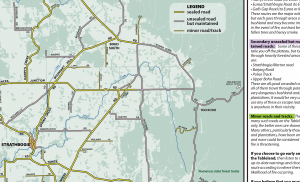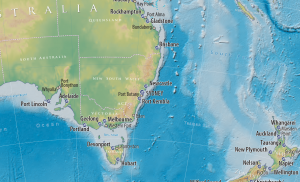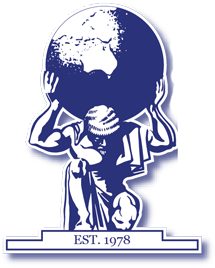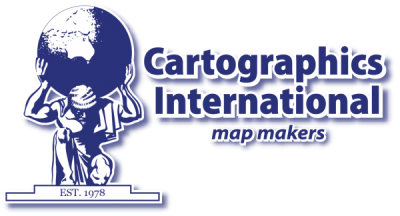Cartography is the term used for “map making”. A cartographer is the person who makes a map. As such, Cartography is the art, study and practice of making maps. It combines science, technique and aesthetics, namely cartographic design to effectively communicate specially selected information.
Cartography is recorded as appearing in English in the middle of the 19th century; derived from French cartographie, Source words would be carte ‘map, card’ (ultimately from Latin charta ‘paper’) + –graphie (based on Greek –γραϕία ‘writing’).
It’s interesting that the meaning of these words goes back to when people used to scratch on/into clay tablets. So Greek graphein ‘to write’ is historically related to English carve and would have meant something more like ‘scratch’; Latin charta ‘paper’ also meant ‘tablet’ (in fact, the English word write also meant ‘to scratch’).
Linquistic attribution – Prof. Kate Burridge, Professor of Linguistics, Monash University, Melbourne.
Cartography dates back all the way to the 7th millennium BCE, and the oldest surviving world maps date back to the 9th century BCE.
 There are 4 fundamental elements of cartography:
There are 4 fundamental elements of cartography:
Compilation – this sets the map’s agenda and specifically what is going to be mapped. This might be physical elements in the case of road maps, or more abstract elements in the case of political boundaries.
Generalisation – this involves eliminating the characteristics of the object to be mapped that are not relevant to the map’s purpose. Generalisation also involves reducing the complexity of the object’s characteristics in order to effectively map it.
Projections – this represents the terrain of the object to be mapped, on flat media.
Design – this is fundamental in ensuring the elements of the map work together to best convey the map’s message to the audience.
 Why is Map Making Still So Important?
Why is Map Making Still So Important?
Clients often ask, why do we still need maps and map makers? Surely there are enough maps in the world already?
Of course, the world has been mapped many times, especially now with the everyday use of GPS, satellite’s and surveying technology. However, many people forget that the world is still constantly changing.
Not only do man-made features change, but natural features of the earth change relatively quickly over time. Places change names, businesses move, states and countries merge or split. New roads and suburbs emerge, coastlines alter, and some islands disappear entirely.
As a result, maps from only a few years ago may no longer be relevant today. A cartographer is specially trained to deal with these complex progressive changes on a daily basis. And unless you’re the only person in the world who is happy to ask for directions, chances are you’ve used a map or two in your life.
Modern map making is the key to progress. Maps are key to spatial relations and are important for economic development, managing land, handling disasters, managing businesses, or simply making decisions on a personal level – like how to get from one place to another.
 Why Do I Need a Cartographer?
Why Do I Need a Cartographer?
Further, a cartographer uses the most up to date data to create the right map for each situation. Custom maps combine this data with your needs and the objectives of the maps in ways that automatically generated maps cannot. We customise everything by designing the colour palette, carefully considering fonts and font sizes, choosing and /or designing appropriate map symbols.
Above all, custom maps are attractive. People like to use maps and to look at them, not just for information. Further, modern cartographers don’t just focus on paper. Cartography encompasses a wide range of mediums, including electronic maps.
Cartographics International loves creating bespoke maps for clients!
Contact us today to start your new cartographic project!

